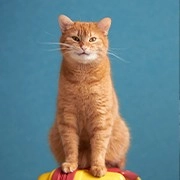Insect Champions

Watching a beetle scuttle across the floor faster than your eye can track or seeing a dragonfly hover with pinpoint precision can feel like witnessing a tiny superhero in action. Insects are masters of speed, strength, and aerial agility, achieving feats that push the limits of biology and physics.
By studying these "Olympians" of the insect world, scientists uncover strategies for survival, energy efficiency, and adaptation, offering inspiration for engineering, robotics, and even personal performance.
Speed Demons: Insects That Zoom
• Australian tiger beetle – This beetle can sprint over 5.6 miles per hour, relative to its tiny body size. Observing its burst movements teaches lessons about short, focused energy use in intense tasks.
Strange Weather Events That Defy Belief and Reveal Nature's Secrets.
Trash bins with cameras and sensors? Sounds weird, but they're quietly cleaning up cities.
Why Are Bubbles Always Round? Discover the Everyday Science That Makes Them Perfectly Spherical!
Why Do Onions Make Us Cry Every Time We Chop Them? Simple Tricks to Stop It!
Why Chocolate Really Boosts Our Mood—Science Explains the Sweet Happiness We Feel Every Bite!
Why Do We Always See Lightning Before Hearing Thunder? Discover the Surprising Science Behind Storms!
• Horseflies and robber flies – Some flies reach up to 25 miles per hour in flight, showing the importance of aerodynamic design. Apply this by streamlining workflows or reducing obstacles in projects to achieve faster outcomes.
• Ants and foraging efficiency – Certain ants can cover large areas quickly to gather food. Mapping routes and prioritizing tasks like ants can improve productivity in daily routines.
Strength Champions: Tiny but Mighty
1. Rhinoceros beetles – These insects can lift objects 850 times their body weight. Experiment with incremental strength challenges in personal training to build endurance and resilience.
2. Leafcutter ants – They carry leaves many times their size back to the nest. Breaking large tasks into manageable units, similar to how ants transport leaf fragments, increases efficiency.
3. Dung beetles – Known to roll balls 1,000 times their weight, dung beetles show the power of leverage and persistence. Using simple tools or smart techniques in everyday life can amplify results without extra effort.
Aerial Acrobats: Masters of Flight
• Dragonflies – Their flight precision allows them to hover, dart, and even fly backward. Practicing controlled, deliberate movement in physical or mental tasks can enhance focus and accuracy.
• Hawk moths – Capable of hovering while feeding on flowers, they demonstrate energy-efficient flight patterns. Humans can optimize energy by balancing focus with periods of rest and recovery.
• Butterflies – Long-distance migrators travel hundreds of miles, often relying on wind currents. Using external advantages, like collaboration or technology, can make challenging projects more achievable.
Lessons From the Insect Olympics
1. Efficiency matters – Insects maximize output with minimal energy, whether sprinting, flying, or lifting. Analyzing workflows for efficiency and eliminating unnecessary effort improves productivity.
2. Adapt to your environment – Tiny athletes adjust strategies to terrain, air currents, or obstacles. Similarly, adapting plans based on available resources or environmental conditions leads to better outcomes.
3. Experiment and iterate – Insects refine movements through evolution; humans can experiment with techniques, timing, and approaches to improve performance in any field.

Inspiration Beyond Size
Observing these insects reminds us that physical limitations don’t define potential. Whether it’s a beetle lifting hundreds of times its weight, a dragonfly executing acrobatic maneuvers, or an ant mapping the fastest route home, these tiny creatures achieve remarkable feats through adaptation, persistence, and precision. We can apply similar principles in daily life: optimize energy, plan strategically, and take calculated risks. Small, consistent improvements—like the tiny athletes in our gardens and forests—can lead to extraordinary results over time.
In the world of insects, even the smallest body can perform Olympic-level feats, and their lessons extend far beyond entomology. By paying attention to speed, strength, and flight in nature, we learn to respect biology’s ingenuity and gain insights into efficiency, problem-solving, and innovation. Every beetle sprint, ant haul, and dragonfly dart is a reminder that greatness can come in the tiniest packages, and observing it can inspire us to reach higher in our own "games."

 · Science team
· Science team